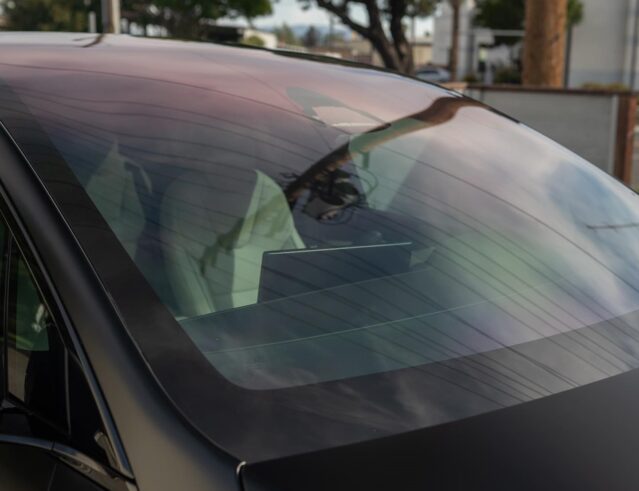Discover the innovation behind windshield protection film and how it acts as a shield against road debris, environmental damages, and more—so you can keep your view clear and your journey safe.
What is Windshield Protection Film?
Windshield protection film is a product engineered to protect your car’s windshield from damage. It acts as a shield, absorbing and distributing the force of impacts from road debris, small stones, and other hazards that can cause chips and cracks. This film also offers a defense against environmental damages such as acid rain, bird droppings, and harmful UV rays, ensuring your view remains clear and unobstructed.
What Is It Made Of?
Typically, windshield protection films are composed of multiple layers, each contributing to the film’s overall effectiveness. Windshield protection film brands like ExoShield, are designed with a multi-layer structure that significantly enhances its impact-absorption capabilities. This structure includes:
- Shock-Absorbing Layer: Made from materials softer than glass, this layer effectively absorbs and disperses energy from incoming objects, protecting the windshield from shattering or damage.
- Prevention and Longevity: The design prevents the glass from becoming damaged upon impact, contributing to the windshield’s extended lifespan.
- Top Protective Layer: Features a layer that resists scratches, preserving the film’s clarity and appearance.
- Adhesive Layer: A strong adhesive layer ensures the film is securely bonded to the glass surface, preventing peeling or detachment.
- Core Film for Strength: Positioned between the top and adhesive layers, the core film adds strength and durability, safeguarding the windshield’s structural integrity even in harsh conditions.
- Optical Clarity: Despite its protective capabilities, the film maintains optical clarity, ensuring that the driver’s visibility is never compromised.
How Does It Work?
High quality windshield protection films are primarily made from PET (polyethylene terephthalate), a type of polyester that offers exceptional chemical stability and durability. This material is renowned for its resilience against various forms of physical and environmental stressors.
- Resistance to Scratches: PET films provide a formidable barrier against scratches, ensuring the windshield remains clear and unblemished over time.
- UV Damage Protection: These films are engineered to block harmful UV rays, thereby protecting the interior of the vehicle from sun damage and reducing the temperature inside the car during hot weather.
- Chemical Resistance: The chemical stability of PET makes these films resistant to the corrosive effects of pollutants, acids, and cleaning agents, maintaining their integrity and protective qualities.
- Versatility Across Driving Conditions: Whether navigating urban streets or exploring rugged terrains, PET films are suited for all driving environments, offering reliable protection against the elements and road debris.
Windshield Protection vs Paint Protection Film (PPF): What’s the Difference?
A common misconception is that windshield protection and paint protection film (PPF) are one and the same—they’re not. Understanding these differences is crucial for any car owner looking to protect their car.
[wptb id=170005]
Can I Apply PPF To My Windshield?
No. While paint protection film (PPF) offers excellent protection for car paint, it’s not suitable for windshields due to its slight haziness and softer material. This haziness can significantly impair driving visibility, making it dangerous. Additionally, the constant movement of wiper blades on the softer PPF surface would lead to rapid wear and scratches, requiring frequent replacements.
In contrast, windshield protection films, like ExoShield, are designed with a harder surface and a nanoceramic hard coat layer to resist abrasion from wiper blades, ensuring durability and maintaining strict optical clarity standards. This makes them the safer and more effective choice for protecting your windshield.
Alphawerks Garage: Your Partner in Windshield Protection
At Alphawerks Garage, we understand the importance of not just any protection, but the right protection for your car. Our expertise in windshield protection films, coupled with our commitment to quality and service, makes us the go-to destination for drivers seeking to navigate the road ahead with confidence.
Don’t wait until it’s too late. Protect your windshield, enhance your safety, and maintain your car’s value with Alphawerks Garage. Contact us today to get started.



